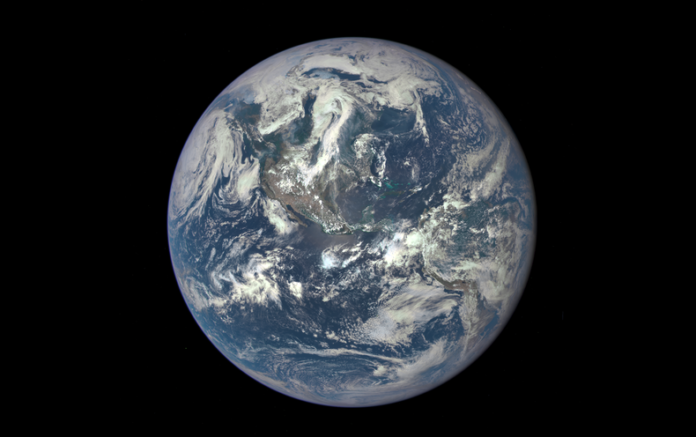Our Earth’s climate is driven by multiple natural factors with the amount of solar radiation reaching the planet’s surface the major influence. Other natural causes of climate variability include Earth’s orbit around the Sun. It’s not circular so the amount of sunlight falling on the planet varies depending on whether we are closer to it or further away over 365.25 days annually. A third natural cause is Earth’s axial tilt which is subject to a slight wobble between 22 to 24 degrees (currently we are at 23.5) from the vertical. And then there is the planet’s innards, the mantle, and core, and the influence that geothermal circulation has on continental drift pushing them apart some times and at other times together.
We see the Sun as a constant and yet we know it is not because the geological record proves the latter. Radiative output has varied dramatically which may explain how Earth has gone through cycles of cooling and heating with the latest cooling trend happening in the last 50 million years. Hence the Ice Age of the past 2.75 million years with glaciers expanding and contracting in rhythm with the amount of solar radiation, and the wobble of the Earth’s axis. Throughout these last few million years, each cycle of glaciation and interglacial warming has been cooler than the last. The peaks have been lasting approximately 100,000 years.
But other natural cycles have also played a role in this recent climate variability. The 41,000-year periodicity caused by Earth’s non-circular orbit combined with the axial tilt variability has impacted the northern hemisphere more than the southern leading to the more pronounced cycles of glaciation in the former than the latter. Throughout, however, Antarctica has remained ice-bound.
The recent Ice Ages, however, don’t compare to what geologists describe as an extreme period of cooling that lasted from 750 million to 580 million years in the past. Evidence indicates an ice-ball Earth from the poles to the equator. Orbital mechanics and solar radiation levels were probably contributing factors to this extreme climate event. What reversed it remains a bit of a mystery? And how early single and multi-cellular life survived the 170 million years of extreme cold is a mystery as well. Could the ice build-up on Earth’s surface have altered the axial wobble to the point where it impacted Earth’s internal circulation within the mantle? Could that have contributed to a period of volcanic activity causing greenhouse gas outgassing to warm the atmosphere and cause the extreme glacial event to end? We are still searching for answers to these questions.
We know today that planets in our Solar System do not all have similar axial tilts to Earth. The most noted exception is Uranus whose axis lies close to 90 degrees from the vertical. In effect as Uranus rotates around the Sun, it acts like a bowling ball rolling down a lane. What caused this to happen on that planet? Could it have been a planetary-sized collision in its past? Could Earth’s axial rotation at some point become as extreme as that of Uranus? Would the magnetic orientation within sedimentary rocks laid down during that past global Ice Age help us understand if a change to Earth’s axis played a significant factor in the 170 million-year period?
These are interesting speculations that the geological record may soon reveal. But there is nothing in Earth’s past history that compares to our present. Because right now, global atmospheric warming caused by our industrial activities and explosive population growth over the past 170 years is affecting the Earth’s axial tilt physically as polar ice vanishes with warming atmosphere and seas.
In an article appearing in The Guardian this past week, Damian Carrington writes, “the massive melting of glaciers as a result of global heating has caused mark shifts in the Earth’s axis of rotation since the 1990s.” In other words, the poles are shifting, not the magnetic ones although they are as well, but the physical poles that mark the antipodes of the Earth’s axis. The loss of hundreds of billions of tons of ice annually is the cause with scientists recording the shift in the rate of axial drift since 1995, 17 times greater than the preceding period. In fact, the polar positions since 1980, the research shows, have moved 4 meters (more than 13 feet). Now that doesn’t sound like a lot, but prior to this life influencing the physical movement of Earth’s axis wasn’t in the cards.
The researchers ruled out other axial triggers that include movements within the mantle that affect continental drift, activity within the oceans from the seafloor to surface waves, and atmospheric changes such as winds and air currents that could contribute to changes to our axial wobble.
So it is us. We, humans, are even impacting the alignment of the Earth’s axis. The change, a mere 4 meters, isn’t a lot. But who would have thought our activity on the planet’s surface could lead to such a consequence?









